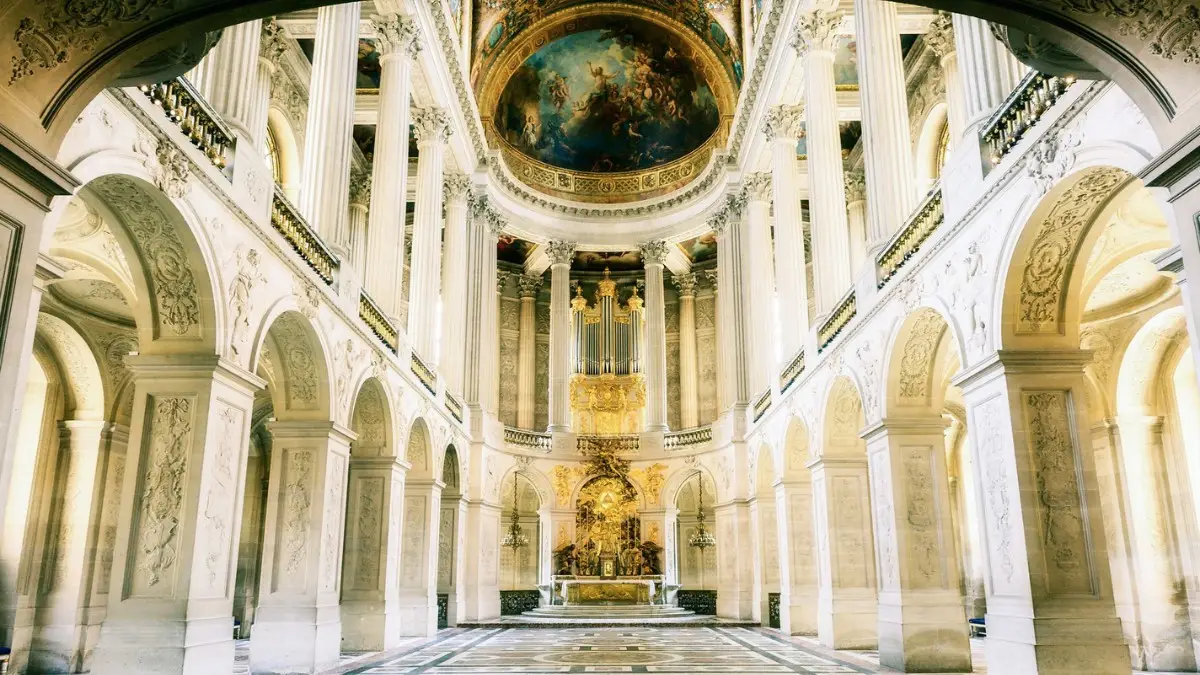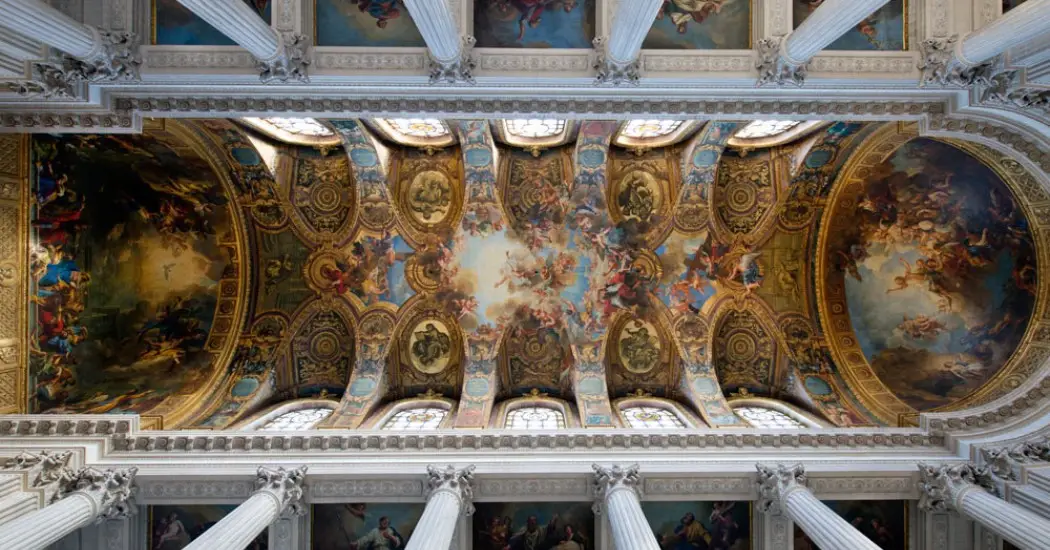The Royal Chapel of Versailles
Louis XIV’s Legacy, Grand architecture, Stunning frescoes & Musical ambience

The Royal Chapel at the Palace of Versailles is one of its most iconic and significant features, earning its title as a “jewel of the Palace.”
Louis XIV, known as the Sun King, viewed the chapel as his final monumental building project and a spiritual legacy.
With the chapel, he sought to create a space worthy of the grandeur of Versailles and the divine power he believed he embodied.
What to See
Visitors to the Royal Chapel will encounter impressive elements both inside and outside the building.
Outside the chapel
The chapel’s tall and sleek silhouette is easily visible upon arrival, with its soaring roof that reaches 40 meters in height.
The front of the chapel features a series of 30 statues, created by 16 sculptors, representing significant figures and virtues in Christianity, such as Saint Ambrose and Saint Andrew.
Inspired by ancient designs, Corinthian pilasters add to the chapel’s grandeur.
The roof was originally adorned with decorative lead work, covered in gold leaf, adding to its opulence.
Inside the chapel

The royal gallery, located in the center of the chapel, provided seating for the king and his family. At the same time, the court’s ladies sat on side balconies, and the remaining attendees stood in the nave’s parterre.
The interior’s vaulted ceiling is uninterrupted and features stunning frescoes by renowned artists of the time, such as Antoine Coypel’s depiction of God the Father in His Glory and Charles de La Fosse’s The Resurrection of Christ in the apse.
The royal gallery offers views of the large stained-glass windows that bathe the chapel in light.
The organ, installed during the chapel’s dedication, remains a standout feature and is decorated with a relief of King David facing the royal gallery.
Explore various tour options in Versailles, including the Full-access ticket with gardens, Skip-the-line guided tour, Round-trip palace tour from Paris, Night fountains show ticket, Versailles palace bike tour, and Private golf cart tour of the palace – perfect for every visitor’s needs.
A Place for Music
Music has always been central to the Royal Chapel’s function. The opening of the chapel saw François Couperin play the newly installed organ.
Today, the chapel hosts concerts showcasing sacred music, making the most of its extraordinary acoustics.
A Lasting Legacy
The Royal Chapel of Versailles is a testament to Louis XIV’s ambition and desire to express divine authority through art.
Although some modifications have been made over the centuries, such as the removal of the lantern from the roof in 1765, much of the chapel remains as it was originally intended.
Restoration work continues today, ensuring that this magnificent chapel remains a key part of Versailles’ history. It is a must-visit location for anyone touring the palace.
If you wish to learn more before you visit Versailles, you can find further details about the palace’s Opening hours, How to reach the palace, Renting vehicles, Tips for visiting the Versailles Palace, and Restaurants and cafes near the palace.
